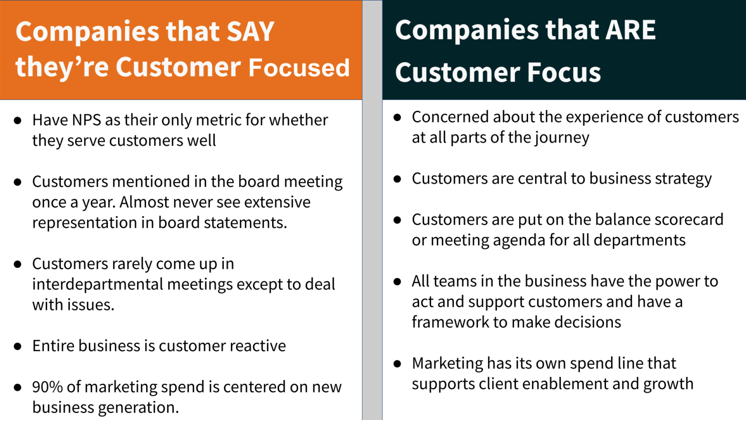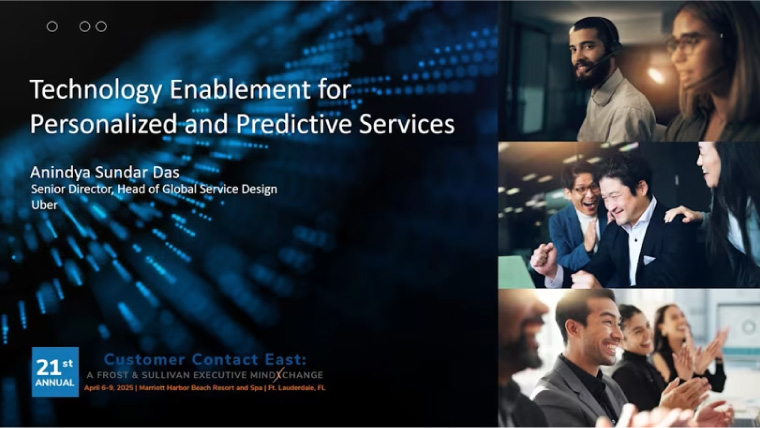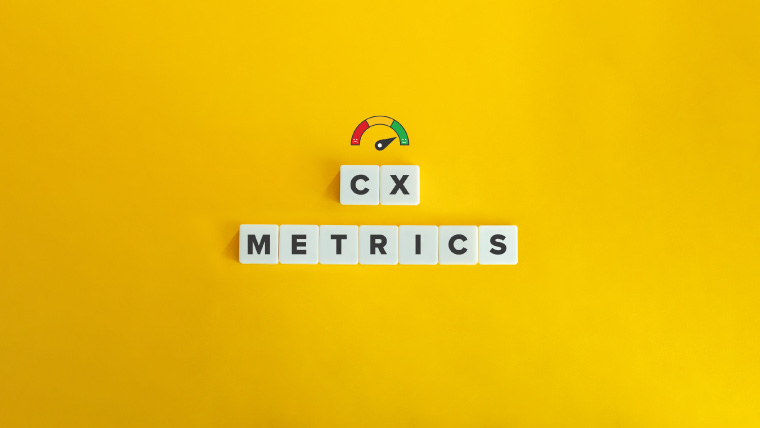What are the most essential shifts a key account director needs to make in order to see industry-leading customer results in their business? The answer is not doing more activity or more technology. It’s a shift in perspective. Why?
- This is because we read the same things, explore the same ideas, ask the same questions and suffer from the same consistent problems: Unknowingly adopt conflicting customer practices
- Have poorly integrated processes that make it difficult for us to sustain what we do
- Often miss the real root causes of our customer challenges
- Can unintentionally live in a limited reality of what’s possible
This is where you as the Customer Leader come in as you seek to activate new value, new insights and better results. To do this requires a shift.
I’m going to show you exactly what these shifts are, why they’re important, the cost of not considering this and the opportunity to transform your results.
Customer leadership drives business value
Your role as a customer leader is more than the growth and maintenance of annual or monthly revenue or retention number. The value you can bring is far greater. You are a custodian of the one area of your business that can double and quadruple the value of a business at a relatively low cost.
But there is a difference between “Saying” it and “Doing” it. Many organizations talk a good game, but very few rarely show up to play. Below is an example of those differences.

You have the ability to influence some of the most important value drivers in your business. Noted by some of the biggest private equity organizations in the world:
- Recurring and repeat revenue
- Lifetime value
- Average revenue per customer
- NPS
- Customer Churn
- Distinctness and Defensibility
- Market prominence
- Financial strength
- Team/talent attraction and retention
Regardless of the level of your leadership, you are and can be a value driver.
These Customer Leadership shifts will get you there and help you win big.
SHIFT ONE: Grow the Gap
Move from trying to stand out to your customers to helping your team and organization “Grow the Gap” with your customers.
“Standing out” keeps you in the game by focusing on things we believe are needed to stay relevant.
“Growing the Gap” is about changing the game by focusing on the essential elements that continually widen the gap between you and any alternative company in the market.
But, “Growing the Gap” isn’t about comparison and doing the same things better, it’s about “Distinction”.
TRUE distinctness with your customers is not a marker of the amazing things you do. It is a marker of whether your customers acknowledge and measure what you do as irrefutably valuable.
How do we “Grow the Gap?”
- Area – decide on the area. What is the area of distinction we are most challenged in? How valuable is this to your customers? What are the most valuable parts of your business to your customers?
- Ask – “Magic Question” – What would need to be true to be the partner of choice in the X area and eliminate the Y comparison?
- Action – Based on this discovery – what are the steps?
If you know comparison exists and you see your customers doing the same, start with this shift.
SHIFT TWO: Integrate first
Move from implementation thinking to integration thinking. What do I mean by this?
“Implementation thinking” focuses on the process of putting a decision or plan into effect; the execution.
“Integration thinking” focuses on the process and priority of cohesion bringing everything together as a whole.
You need both. But the challenge is many leaders have no plan for how to integrate new ideas, practices and processes with high degrees of success with their teams and departments. Why?
We get stuck in the activity of Implementation and miss the skill and science of Integration. Is this really that important? Implementation without integration leads to Random Acts of Success (RAS) or worse Recurring Acts of Failure/Frustration (RAF), costing more time, energy, resource and confidence; no one wants this. I talk about this in my article The Cost of Chaos.
Let me introduce you to a simple framework to move from implementation to integration thinking: The R.A.R.E™️ model was designed specifically for my business and my customers, to understand how to successfully integrate the practices and processes they want.
R – Root cause and Reasons
You must first understand exactly what the real problem you’re trying to solve is.
Root cause – one of the most common and undervalued reasons for poor execution is a lack of clarity on the problem being solved for.
If you’re experiencing high customer churn, the problem may be that you need to increase customer contact to catch signs of dissatisfaction early, instead of merely identifying the problem as “keeping more customers”.
Reasons – Once you’ve understood the root cause you must know the most compelling reason. In simpler terms, it is the “Why now and what’s in for everyone?” This is important to all those involved.
A – Advantage
Determine what advantage you want the implementation outcome to create.
The advantage matters because you want a solution that expresses a new capability rather than just a new administrative process. New capabilities demonstrate a tangible asset that businesses can continually benefit from. This provides a strong case for adoption across departments and at a senior level.
R – Remodel
Adjust to determine the next steps. I’ve never experienced a best practice that hasn’t had to have some shift in the approach for an organization, so you must remodel.
Once you know what you want to adopt it’s vital to know what risks and blocks internally and externally there are. Then plan to address them to get the results you want.
E – Execute
Decide and fully commit to the remodel. Ensure you act on what’s most important, track what is measurable, and obtain feedback from invested parties often.
Execution is the place you’re very familiar with as it’s “getting things done.” Strong execution is connected to strong integration thinking:
- Everyone else is telling you… (FOCUS ON EXECUTION)
- I am saying… (FOCUS ON INTEGRATION AND EXECUTION GETS EASIER)
SHIFT THREE: Obsess on Impact
Your reputation for results is more important than the feeling of a good relationship. What often does not get communicated well in organizations is the level of influence a business can gain if they choose to grow their IMPACT visibility.
IMPACT is not about RESULTS your customer pays you for. IMPACT reflects the UNSEEN benefits and value added that exists because your client has a relationship with you. If the only thing a customer measured you on is the result that didn’t happen the relationship is at risk. But sometimes things go wrong.
Impact is what your client experiences as an extension of your relationship.
What have you solved for your customers outside of your core services? This has value but you may undervalue it or not know how to communicate it. Relationships might get you in the room, but reputation keeps you being invited back to the room.
This is where IMPACT thinking comes in.
Impact thinking is a mindset and a strategy to build an unquestionable reputation of results that leads to company wide recognition and defense of your services with your customers. There are seven broad areas of IMPACT you should look to identify first.
IMPACT to:
- Customer Contacts
- Customer Revenue/Cost
- Customer Employees
- Customers Partners
- Customer Exec team/Leadership
- Customer Shareholders
- Customer Brand
- Customer CSR/Community/Social initiatives
The more IMPACT areas you can communicate that exist outside of the paid service of the customer, the faster your reputation will travel. We want the customer to view the relationship with us as equal to or more valuable than our product/service itself. IMPACT thinking helps you to do that.
What’s next?
I’ve covered a lot in this article. Here’s the good news… you don’t have to try all three of these shifts at once. Just choosing one shift will transform the results in your department and with your customers. You have to choose to embody the mindset of a true Customer Leader.
Whether you’re just starting out leading a team, or you’re an experienced leader, there are greater levels you can get to.
If you’ve never considered these concepts and want to know the full program behind this, take the Customer Impact Score to find out your score and join the “Customer Transformation Leader” community. Be part of a group of leaders seeking to activate the things that influence results with your customers and ultimately build organizations your customers never want to leave.
I strongly believe, your customers are your number one strategic growth advantage. To realize this you need a shift in perspective before a shift in activity.
Jermaine will be speaking about Investing in CX Priorities to Generate Customer Lifetime Value at Customer Experience 2023: A Frost & Sullivan Executive MindXchange. Learn more or register here.
Jermaine is a multi-business owner, author, international speaker and advisor. With two decades of experience in sales and customer leadership managing departments as large as 400, Jermaine specializes in designing customer growth and loyalty strategies and systems that help businesses accelerate and sustain revenue and retention in any market.
Having coached thousands of customer calls and delivered growth projects in 22 countries and 29 industries, he is invited by companies like Dell, GE and London Business School to help leaders build customer programs that work at scale. Take the Customer Impact Score. Or connect on LinkedIn.


